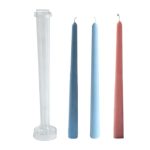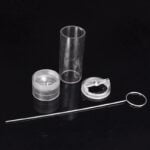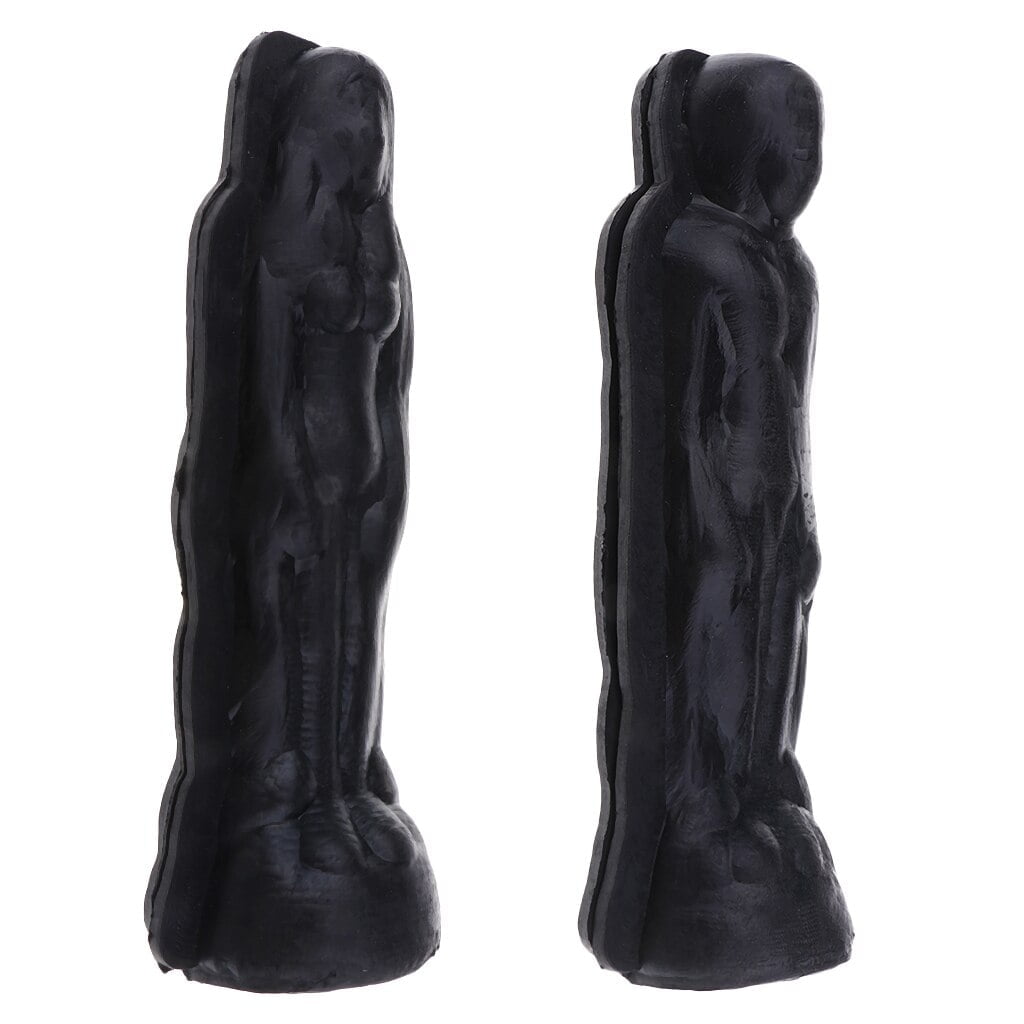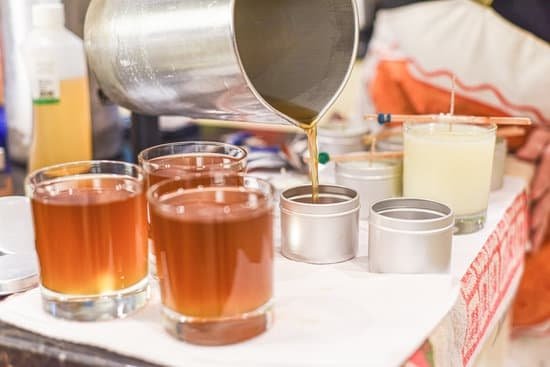Have you ever wondered why your candle is making a popping sound? It can be a common occurrence, but understanding the cause behind it is important for both safety and enjoyment of your candles. In this blog post, we will delve into the science behind the popping sounds, explore the types of candles prone to this issue, address safety concerns, and provide practical tips on how to prevent and troubleshoot this phenomenon.
When lighting a candle, you may have noticed a small popping or crackling sound coming from the flame. This can be puzzling for many people, but there are scientific reasons behind why candles make these sounds. Understanding the science behind it can help in preventing potential safety hazards and ensuring a pleasant candle-burning experience.
Throughout this article, we will discuss the impact of air pockets, moisture, and temperature changes on candle burning, as well as identifying specific types of candles that are more likely to make popping sounds. Additionally, we will touch on safety concerns related to this issue and offer practical tips for preventing and troubleshooting popping sounds in candles. So let’s dive into the fascinating world of candle science.
The Science Behind Popping Sounds
Candles are a popular choice for creating a warm and inviting atmosphere, but it can be concerning when they start making popping sounds. Understanding the science behind this phenomenon can help address the issue and ensure a safer candle-burning experience. So, why is my candle making a popping sound? Let’s delve into the scientific explanation behind this common occurrence.
The popping sounds produced by candles can be attributed to the presence of air pockets within the wax. As the candle burns, these air pockets can create small explosions, resulting in the audible popping noise. Additionally, moisture present in the wax or wick can also contribute to popping sounds as it turns into steam during burning. Furthermore, temperature changes within the surrounding environment can cause the wax to expand and contract, leading to cracking and popping sounds.
To better understand the science behind popping sounds in candles, consider the following factors:
- Air pockets: The presence of air bubbles or voids within the wax
- Moisture: The impact of moisture content in both the wax and wick
- Temperature changes: How fluctuations in temperature affect candle behavior
It’s important to note that not all candles will make popping sounds, as various factors such as candle shape, wax type, and wick size can influence their susceptibility to producing these noises. By understanding the science behind popping sounds in candles, individuals can take proactive steps to minimize this occurrence and enjoy a safer candle-burning experience.
Types of Candles Prone to Popping
When it comes to the phenomenon of candles making a popping sound, not all candles are created equal. Certain types of candles are more prone to producing these unexpected noises, and understanding the factors that contribute to this can help in addressing the issue effectively. Below are some of the types of candles that are commonly known to make popping sounds:
- Paraffin Wax Candles: Candles made from paraffin wax, a byproduct of petroleum refining, are more likely to make popping sounds when burned. This is due to the composition of paraffin wax, which can create air pockets as it melts and burns.
- Large Pillar Candles: Pillar candles with a larger diameter have a larger surface area for heat dispersion, leading to temperature variations within the candle. These variations can cause air pockets to form and result in popping sounds during burning.
- Soy Wax Candles: While soy wax is generally considered a cleaner and healthier alternative to paraffin wax, soy wax candles are also prone to making popping sounds. The presence of natural oils and moisture in soy wax can contribute to crackling or popping noises as they evaporate during burning.
To minimize popping sounds, consider using beeswax or coconut wax candles, as they tend to produce fewer air pockets and moisture-related issues during burning. Additionally, choosing smaller-sized candles with a single wick may also reduce the likelihood of experiencing popping sounds during burning.
Safety Concerns
When a candle makes a popping sound, it can be concerning for many people. The most common cause of this phenomenon is the presence of air pockets within the candle. When the flame burns down to the pocket of air, it creates a mini-explosion or “pop” sound. Another possible reason could be moisture in the wax, which creates steam and causes a similar effect. Temperature changes can also contribute to popping sounds as the wax expands and contracts.
To address safety concerns related to popping sounds from candles, it’s important to consider potential hazards. One concern is the potential for hot wax to splatter or spatter when a candle pops, which could lead to burns or damage to surrounding surfaces. Additionally, if a large air pocket causes a significant explosion within the candle, it could potentially extinguish the flame and create additional fire hazards.
To prevent accidents associated with popping sounds, there are several tips that individuals can follow. Ensuring that candles are placed on stable and heat-resistant surfaces can help minimize the risk of spills or tipping over in response to unexpected popping sounds. Keeping candles away from drafts and flammable materials can also reduce safety risks associated with these occurrences.
Lastly, being attentive while burning candles is crucial for maintaining safety. Observing if a candle makes excessive popping sounds can indicate that it has structural issues or is not burning properly. In such cases, promptly extinguishing the candle and addressing any related problems is necessary to maintain a safe environment.
How to Prevent Popping Sounds
Candles are a popular choice for adding ambiance and warmth to any space, but the popping sounds they sometimes make can be a cause for concern. If you’ve ever wondered “why is my candle making a popping sound,” you’re not alone. This section aims to provide practical tips for preventing candles from making popping sounds, ensuring a safe and enjoyable candle-burning experience.
To prevent popping sounds, it’s essential to properly prepare and burn your candles. One common reason candles make popping sounds is the presence of air pockets within the wax. To reduce the likelihood of air pockets forming, it’s important to allow your candle to cool and harden properly before burning it for the first time. Additionally, trimming the wick to the recommended length before each use can help minimize popping sounds.
Another key factor in preventing popping sounds is the quality of the candle’s wax and wick. Choosing high-quality candles with clean-burning waxes and well-made wicks can significantly reduce the likelihood of experiencing popping sounds during burning. Beeswax and soy wax candles are known for producing fewer popping sounds compared to paraffin wax candles.
Lastly, proper candle maintenance can go a long way in preventing unwanted popping sounds. Keeping your candles away from drafts or sudden temperature changes can help maintain a consistent burn and reduce the occurrence of popping sounds. It’s also important to keep candles free from dust and debris, as these can contribute to erratic burning and increased noise.
By following these practical tips, you can minimize or even eliminate popping sounds from your candles, ensuring a peaceful and enjoyable atmosphere without any unexpected disruptions.
| Preventive Tips | Description |
|---|---|
| Properly Prepare Candles | Allowing candles to cool and harden properly before burning reduces air pockets. |
| Quality Wax and Wick | Choose high-quality candles with clean-burning waxes such as beeswax or soy wax. |
| Candle Maintenance | Keep candles away from drafts, trim the wick regularly, and keep them free from dust and debris. |
Troubleshooting Popping Sounds
Identifying the Potential Causes
When you notice your candle making a popping sound, it can be quite alarming. However, understanding the potential causes of this phenomenon can help troubleshoot the issue effectively. One common reason for a candle to make popping sounds is the presence of air pockets within the wax.
As the candle burns, these air pockets heat up and eventually burst, resulting in the distinctive popping noise. Additionally, moisture in the wax or wick, as well as sudden changes in temperature, can also contribute to popping sounds.
Addressing Air Pockets and Moisture
To prevent or reduce popping sounds in candles, it’s important to take proactive steps when preparing and burning them. One way to address air pockets is by ensuring that the wax is poured and cooled evenly during the candle-making process. This can minimize the formation of air pockets within the candle.
Similarly, keeping candles away from areas with high humidity can help prevent moisture from affecting the burning process. Choosing quality materials and properly storing candles can also contribute to minimizing popping sounds.
Choosing the Right Wick
Another factor that can impact popping sounds in candles is the size and type of wick used. A wick that is too large for the candle may result in excessive heat, leading to more pronounced popping sounds.
On the other hand, a wick that is too small may not create enough heat for proper combustion, potentially causing moisture-related issues and an uneven burn. Selecting an appropriate wick size based on the candle’s diameter and type of wax used can play a significant role in reducing popping sounds during burning.
By addressing these potential causes and taking preventive measures, you can enjoy a quieter and safer candle-burning experience while minimizing popping sounds.
The Impact of Popping Sounds on Candle Quality
Candles are a popular and versatile lighting option, often creating a cozy and relaxing atmosphere. However, one common issue that can arise when burning candles is the unexpected popping sounds that occur. These sounds can not only be startling but also raise questions about the quality and safety of the candle. In this section, we will explore the impact of popping sounds on candle quality and how it affects the overall candle-burning experience.
Effect on Aesthetics
When a candle emits loud popping sounds while burning, it can detract from the overall aesthetic experience. The constant interruption of these noises can disrupt the calming ambiance that candles are intended to create. Additionally, if the candle is being used for decorative purposes, such as during a special event or dinner party, the popping sounds may be especially unwelcome.
In addition to visual appeal, popping sounds may also affect the aroma of scented candles. The disruption caused by these noises can impede the diffusion of fragrances, impacting the intended olfactory experience associated with scented candles.
Impact on Burning Time
Another consideration when addressing popping sounds in candles is their potential impact on burning time. The irregular distribution of heat caused by these disruptions may result in uneven melting of wax. This could ultimately shorten the total burning time of the candle, leading to premature depletion and reduced value for consumers.
Moreover, erratic heating due to popping sounds may cause excessive wax drips and puddles around the candle’s exterior. This not only affects aesthetics but also poses potential safety hazards from flames coming into contact with excess wax build-up.
Overall Quality Concerns
Popping sounds may hint at underlying issues with the quality and construction of a candle. In some cases, it may signal poor wick placement or inadequate wick trimming prior to lighting. Identifying and addressing these concerns are crucial for ensuring a high-quality and safe burning experience.
Understanding how popping sounds impact both aesthetics and practical functionality underscores why it’s essential to address this issue promptly. By recognizing these potential consequences on candle quality, consumers can take proactive steps to prevent or troubleshoot popping sounds while enhancing their overall enjoyment when using candles.
Conclusion
In conclusion, understanding why candles make popping sounds is essential for ensuring a safe and enjoyable candle-burning experience. The scientific explanation behind popping sounds, as well as the impact of air pockets, moisture, and temperature changes, shed light on the common occurrence.
It’s important to recognize that specific types of candles are more prone to making popping sounds due to factors such as shape, wax type, and wick size. Addressing potential safety concerns associated with popping sounds is crucial for preventing accidents and promoting candle burning in a safe manner.
To prevent popping sounds from occurring in candles, it’s recommended to follow practical tips for proper preparation and burning. By taking proactive steps such as trimming the wick and avoiding drafts, individuals can minimize the likelihood of their candles making popping sounds. In cases where troubleshooting is necessary, addressing common issues such as air pockets and incomplete wax melting can contribute to a better candle-burning experience.
Ultimately, being mindful of the impact of popping sounds on the overall quality and performance of candles emphasizes the importance of addressing this issue. By incorporating the insights provided in this blog post into their candle-burning practices, readers can enhance their enjoyment of candles while ensuring safety. Therefore, taking proactive steps in addressing popping sounds in candles is highly encouraged for creating a positive and fulfilling candle-burning experience.
Frequently Asked Questions
Why Do Candles Make a Crackling Noise?
Candles make a crackling noise due to the presence of impurities, such as dust or moisture, in the wick or wax. When the candle burns, these impurities cause small explosions that result in the crackling sound.
Is It Normal for Candles to Pop?
Yes, it is normal for candles to pop, especially if they contain natural materials like beeswax or soy wax. As the candle burns, pockets of air and moisture within the wax can create small bursts of vapor that produce popping sounds.
Why Shouldn’t You Burn Candles for More Than 4 Hours?
Burning candles for more than 4 hours can lead to excessive wick formation, increased risk of soot and smoke, and potential overheating of the container. It’s important to follow recommended burn times to ensure safe and efficient use of candles.

Welcome to my candle making blog! In this blog, I will be sharing my tips and tricks for making candles. I will also be sharing some of my favorite recipes.





